LETS TALK ABOUT "THE TECHNOLOGY OF NIGHT VISIONS & IMAGERS"
INTRODUCTION
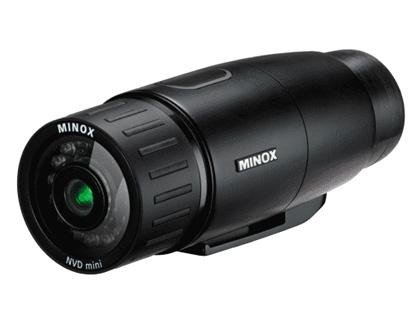
Night vision technology by definition, literally allows one to see in the dark. Originally developed for military use, it has provided the United States with a strategic military advantage, the value of which can be measured in lives.
Federal and state agencies now routinely utilize the technology for site security, surveillance as well as search and rescue. Night vision equipment has evolved from bulky optical instruments in lightweight goggles through the advancement of image intensification technology.
TYPES OF NIGHT VISION
Night Vision technology is a term that presently encompasses three distinct technologies. The first night vision equipment was developed during the Korean War. Now sometimes referred to as generation-zero, this equipment employed image converter technology to transform infrared to visible light.
The equipment operated in an active mode in that it required the subject of observation to be illuminated with an infrared light source. Lasers and filtered flashlights were utilized for this purpose. Resolution of the detector was constrained by the available processing technology at the time, limiting practical military engagement distances to within a few hundred meters. This active system also had the drawback of being easily detected by others with viewing equipment.

The subsequent principal technological development for night vision is thermal imaging. Thermal imagers are passive systems that respond to available infrared light at wavelengths in the 8-12 micrometer range. These wavelengths are readily emitted by all blooded animals as well as soil and plant life, warmed during the daytime hours. Infrared light is thus generated and available continuously, during both the day and night, so that these viewers have the distinction of performing equally well in both environmental lighting extremes.
The vast majority of night vision equipment and what most people think of when the are referring to ``Night Vision'' are devices that utilize image intensification technology. These devices are presently in their third development phase. They are passive devices that operate using naturally available light. Incoming light is converted to electrons, which are amplified and converted back into visible light.
HOW NIGHT VISION WORKS
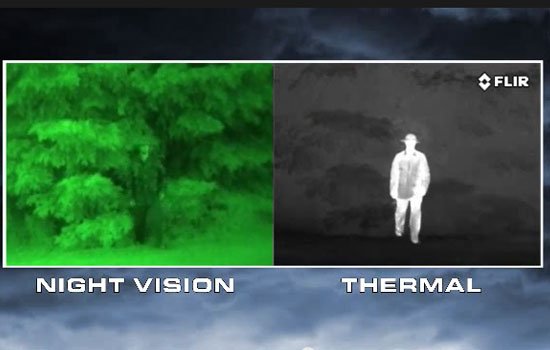
(Source)[http://explainthatstuff.com]
The first thing you probably think of when you see the words night vision is a spy or action movie you've seen, in which someone straps on a pair of night-vision goggles to find someone else in a dark building on a moonless night. And you may have wondered "Do those things really work? Can you actually see in the dark?"
The answer is most definitely yes. With the proper night-vision equipment, you can see a person standing over 200 yards (183 m) away on a moonless, cloudy night! Night vision can work in two very different ways, depending on the technology used.
Image enhancement - This works by collecting the tiny amounts of light, including the lower portion of the infrared light spectrum, that are present but may be imperceptible to our eyes, and amplifying it to the point that we can easily observe the image.**
Thermal imaging - This technology operates by capturing the upper portion of the infrared light spectrum, which is emitted as heat by objects instead of simply reflected as light. Hotter objects, such as warm bodies, emit more of this light than cooler objects like trees or buildings.**
In this article, you will learn about the two major night-vision technologies. We'll also discuss the various types of night-vision equipment and applications. But first, let's talk about infrared light.
GENERATIONS
NVDs have been around for more than 40 years. They are categorized by generation. Each substantial change in NVD technology establishes a new generation.
Generation 0 - The original night-vision system created by the United States Army and used in World War II and the Korean War, these NVDs use active infrared. This means that a projection unit, called an IR Illuminator, is attached to the NVD. The unit projects a beam of near-infrared light, similar to the beam of a normal flashlight. Invisible to the naked eye, this beam reflects off objects and bounces back to the lens of the NVD. These systems use an anode in conjunction with the cathode to accelerate the electrons. The problem with that approach is that the acceleration of the electrons distorts the image and greatly decreases the life of the tube. Another major problem with this technology in its original military use was that it was quickly duplicated by hostile nations, which allowed enemy soldiers to use their own NVDs to see the infrared beam projected by the device.
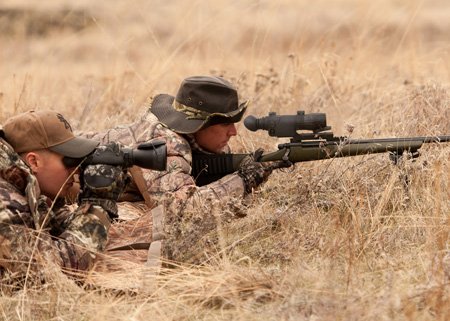
(Source)[http://opticsplanet.com]
Generation 1 - The next generation of NVDs moved away from active infrared, usingpassive infrared instead. Once dubbed Starlight by the U.S. Army, these NVDs use ambient light provided by the moon and stars to augment the normal amounts of reflected infrared in the environment. This means that they did not require a source of projected infrared light. This also means that they do not work very well on cloudy or moonless nights. Generation-1 NVDs use the same image-intensifier tube technology as Generation 0, with both cathode and anode, so image distortion and short tube life are still a problem.
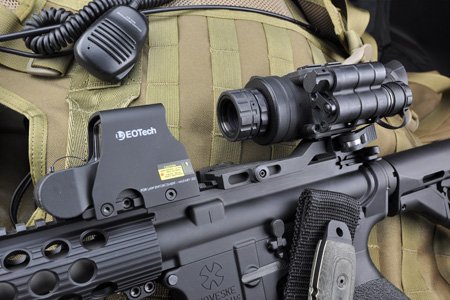
(Source)[http://www.opticsplanet.com]
Generation 2 - Major improvements in image-intensifier tubes resulted in Generation-2 NVDs. They offer improved resolution and performance over Generation-1 devices, and are considerably more reliable. The biggest gain in Generation 2 is the ability to see in extremely low light conditions, such as a moonless night. This increased sensitivity is due to the addition of the microchannel plate to the image-intensifier tube. Since the MCP actually increases the number of electrons instead of just accelerating the original ones, the images are significantly less distorted and brighter than earlier-generation NVDs.
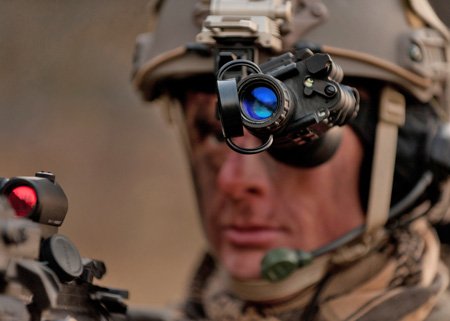
(Source)[http://opticsplanet.com]
Generation 3 - Generation 3 is currently used by the U.S. military. While there are no substantial changes in the underlying technology from Generation 2, these NVDs have even better resolution and sensitivity. This is because the photo cathode is made using gallium arsenide, which is very efficient at converting photons to electrons. Additionally, the MCP is coated with an ion barrier, which dramatically increases the life of the tube.

(Source)[http://opticsplanet.com]
Generation 4 - What is generally known as Generation 4 or "filmless and gated" technology shows significant overall improvement in both low- and high-level light environments.
The removal of the ion barrier from the MCP that was added in Generation 3 technology reduces the background noise and thereby enhances the signal to noise ratio. Removing the ion film actually allows more electrons to reach the amplification stage so that the images are significantly less distorted and brighter.
The addition of an automatic gated power supply system allows the photocathode voltage to switch on and off rapidly, thereby enabling the NVD to respond to a fluctuation in lighting conditions in an instant. This capability is a critical advance in NVD systems, in that it allows the NVD user to quickly move from high-light to low-light (or from low-light to high-light) environments without any halting effects. For example, consider the ubiquitous movie scene where an agent using night vision goggles is sightless when someone turns on a light nearby. With the new, gated power feature, the change in lighting wouldnt have the same impact; the improved NVD would respond immediately to the lighting change.
Many of the so-called "bargain" night-vision scopes use Generation-0 or Generation-1 technology, and may be disappointing if you expect the sensitivity of the devices used by professionals. Generation-2, Generation-3 and Generation 4 NVDs are typically expensive to purchase, but they will last if properly cared for. Also, any NVD can benefit from the use of an IR Illuminator in very dark areas where there is almost no ambient light to collect.
NVDs come in a variety of styles, including ones that can be mounted to cameras.
A cool thing to note is that every single image-intensifier tube is put through rigorous tests to see if it meets the requirements set forth by the military. Tubes that do are classified as MILSPEC. Tubes that fail to meet military requirements in even a single category are classified as COMSPEC.
NIGHT VISION EQUIPMENT AND APPLICATIONS
Night-vision equipment can be split into three broad categories:
Scopes - Normally handheld or mounted on a weapon, scopes are monocular (one eye-piece). Since scopes are handheld, not worn like goggles, they are good for when you want to get a better look at a specific object and then return to normal viewing conditions.
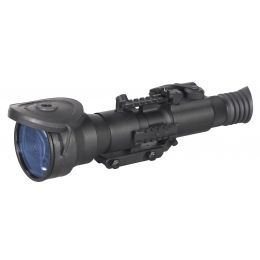
(Source)[http://opticsplanet.com]
Goggles - While goggles can be handheld, they are most often worn on the head. Goggles are binocular (two eye-pieces) and may have a single lens or stereo lens, depending on the model. Goggles are excellent for constant viewing, such as moving around in a dark building.
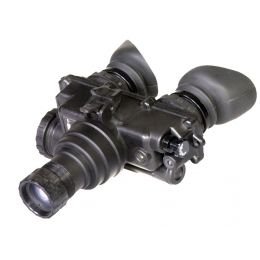
(Source)[http://opticsplanet.com]
Cameras - Cameras with night-vision technology can send the image to a monitor for display or to a VCR for recording. When night-vision capability is desired in a permanent location, such as on a building or as part of the equipment in a helicopter, cameras are used. Many of the newer camcorders have night vision built right in.
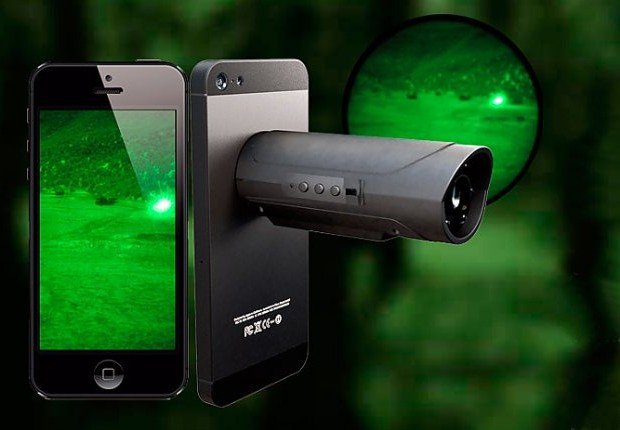
(Source)[http://myboothang.com]
APPLICATIONS
Common applications for night vision include:
Military
Law enforcement
Hunting
Wildlife observation
Surveillance
Security
Navigation
Hidden-object detection
Entertainment
The original purpose of night vision was to locate enemy targets at night. It is still used extensively by the military for that purpose, as well as for navigation, surveillance and targeting.
Police and security often use both thermal-imaging and image-enhancement technology, particularly for surveillance. Hunters and nature enthusiasts use NVDs to maneuver through the woods at night.
Detectives and private investigators use night vision to watch people they are assigned to track. Many businesses have permanently-mounted cameras equipped with night vision to monitor the surroundings.
A really amazing ability of thermal imaging is that it reveals whether an area has been disturbed, it can show that the ground has been dug up to bury something, even if there is no obvious sign to the naked eye. Law enforcement has used this to discover items that have been hidden by criminals, including money, drugs and bodies. Also, recent changes to areas such as walls can be seen using thermal imaging, which has provided important clues in several cases.
Camcorders are a fast-growing segment of the night-vision industry.
Many people are beginning to discover the unique world that can be found after darkness falls. If you're out camping or hunting a lot, chances are that night-vision devices can be useful to you -- just be sure to get the right type for your needs.
** TECHNICAL CHARACTERISTICS OF NIGHT VISION**
Using intensified night vision is different from using regular binoculars and/or your own eyes. Below are some of the aspects of night vision that you should be aware of when you are using an image intensified night vision system.
Textures, Light and Dark
Objects that appear light during the day but have a dull surface may appear darker through the night vision unit than objects that are dark during the day but have a highly reflective surface. For example, a shiny, dark-colored jacket may appear brighter than a light-colored jacket with a dull surface.
Depth Perception
Night vision does not present normal depth perception.
Fog and Rain
Night vision is very responsive to reflective ambient light; therefore, the light reflecting off of fog or heavy rain causes much more light to go toward the night vision unit and may degrade its performance. However, advances in the latest night vision help offset these effects.
Honeycomb
Honeycomb is a faint hexagonal pattern, which is the result of the manufacturing process.
Spots
A few black spots throughout the image area also are inherent characteristics of all night vision technology. These spots will not increase in size or number.
Do not be concerned if you see this feature. It is an inherent characteristic found in light amplification night vision systems that incorporate a microchannel plate in the intensifier.
CONCLUSION
Although the term ``night vision'' currently encompasses three distinct technologies, it is the evolution of image intensification technology that first made devices practical and widely used. Their success was the result of advancements in light amplification and resolution techniques.
REFERENCES
Websites:http://www.howstuffworks.com
http://www.google.com
http://explainthatstuff.com
http://opticsplanet.com



Copying and pasting content from the web is the easiest way to get a lifetime ban from the #steemstem community.